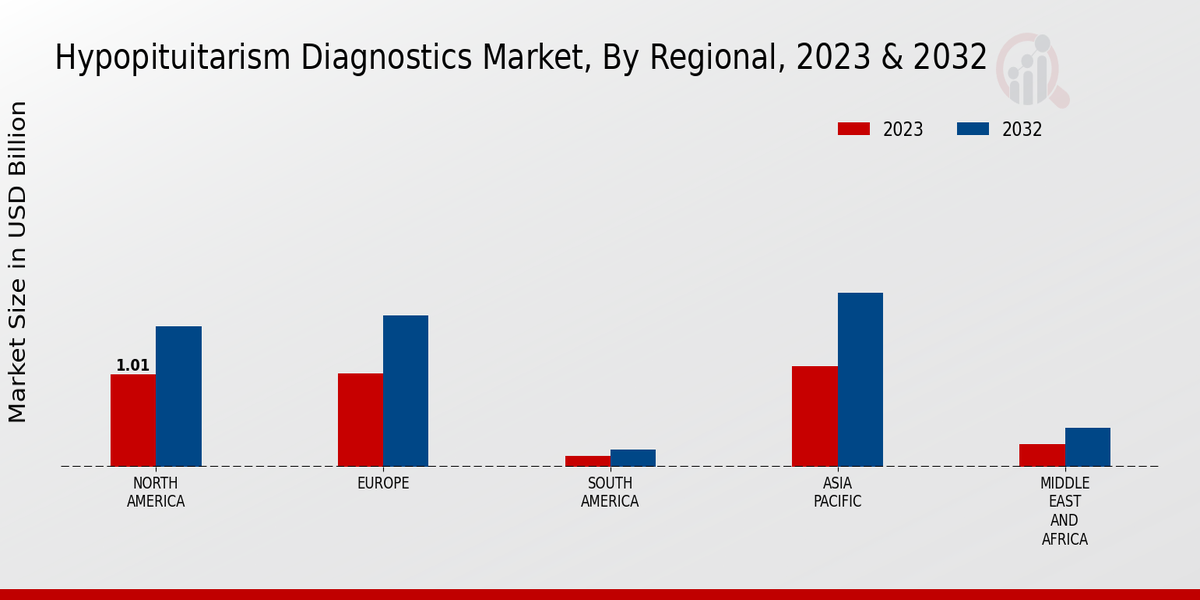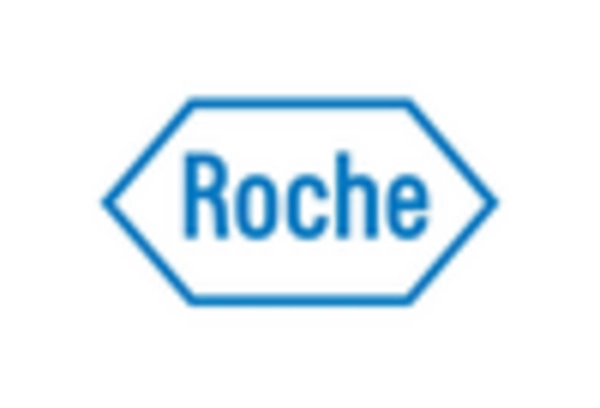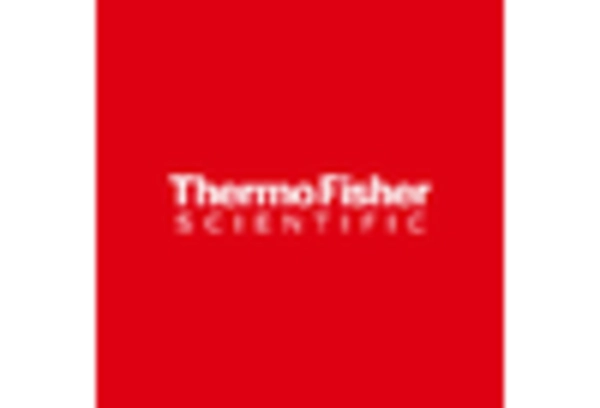Rising Incidence of Hypopituitarism
The increasing prevalence of hypopituitarism is a notable driver for the Hypopituitarism Diagnostics Market. As more individuals are diagnosed with this condition, the demand for effective diagnostic tools rises. Recent estimates suggest that the incidence of hypopituitarism may be as high as 1 in 10,000 individuals, with certain populations experiencing even higher rates. This growing patient population necessitates advancements in diagnostic methodologies, thereby propelling market growth. Furthermore, the aging population is likely to contribute to this trend, as age-related factors can lead to pituitary dysfunction. Consequently, healthcare providers are increasingly focusing on developing and implementing innovative diagnostic solutions to address this rising need.
Increased Focus on Personalized Medicine
The shift towards personalized medicine is emerging as a key driver in the Hypopituitarism Diagnostics Market. Tailoring treatment plans based on individual patient profiles necessitates precise diagnostic tools that can accurately identify specific hormonal deficiencies. This trend is supported by a growing body of research indicating that personalized approaches can lead to better management of hypopituitarism. As healthcare systems increasingly adopt personalized strategies, the demand for advanced diagnostic solutions that can provide detailed insights into hormonal levels and pituitary function is likely to rise. This evolution in patient care is expected to foster innovation within the diagnostics market.
Rising Awareness and Education Initiatives
The growing awareness of hypopituitarism among healthcare professionals and the general public is driving the Hypopituitarism Diagnostics Market. Educational campaigns aimed at increasing knowledge about the symptoms and implications of hypopituitarism are becoming more prevalent. As awareness rises, more individuals are likely to seek medical advice and diagnostic testing, leading to earlier detection and treatment. This trend is supported by various health organizations that are actively promoting education on endocrine disorders. Consequently, the increased demand for diagnostic services is expected to positively impact the market, as more patients are identified and treated for hypopituitarism.
Technological Innovations in Diagnostic Tools
Technological advancements play a crucial role in shaping the Hypopituitarism Diagnostics Market. Innovations such as high-throughput screening, advanced imaging techniques, and improved hormonal assays are enhancing the accuracy and efficiency of hypopituitarism diagnostics. For instance, the introduction of next-generation sequencing has revolutionized genetic testing, allowing for the identification of underlying genetic causes of pituitary disorders. Additionally, the integration of artificial intelligence in diagnostic processes is streamlining data analysis and interpretation, leading to quicker and more reliable results. As these technologies continue to evolve, they are expected to significantly impact the market, driving growth and improving patient outcomes.
Growing Investment in Healthcare Infrastructure
Investment in healthcare infrastructure is a significant factor influencing the Hypopituitarism Diagnostics Market. Governments and private entities are increasingly allocating resources to enhance diagnostic capabilities, particularly in endocrinology. This trend is evident in various regions, where healthcare systems are expanding their diagnostic facilities and integrating advanced technologies. For example, initiatives aimed at improving laboratory services and increasing access to specialized testing are becoming more common. Such investments not only improve the availability of diagnostic services but also encourage the development of new diagnostic tools and methodologies, thereby stimulating market growth.


















Leave a Comment